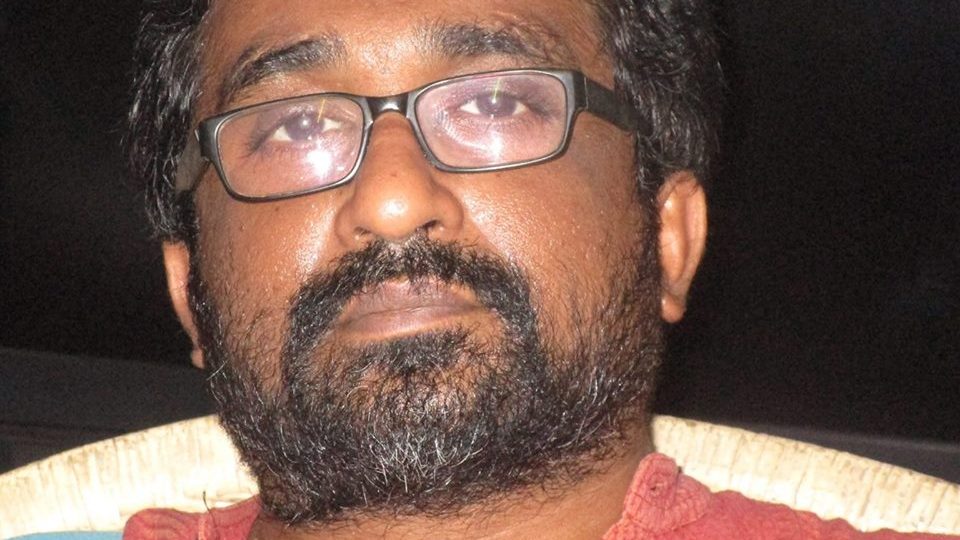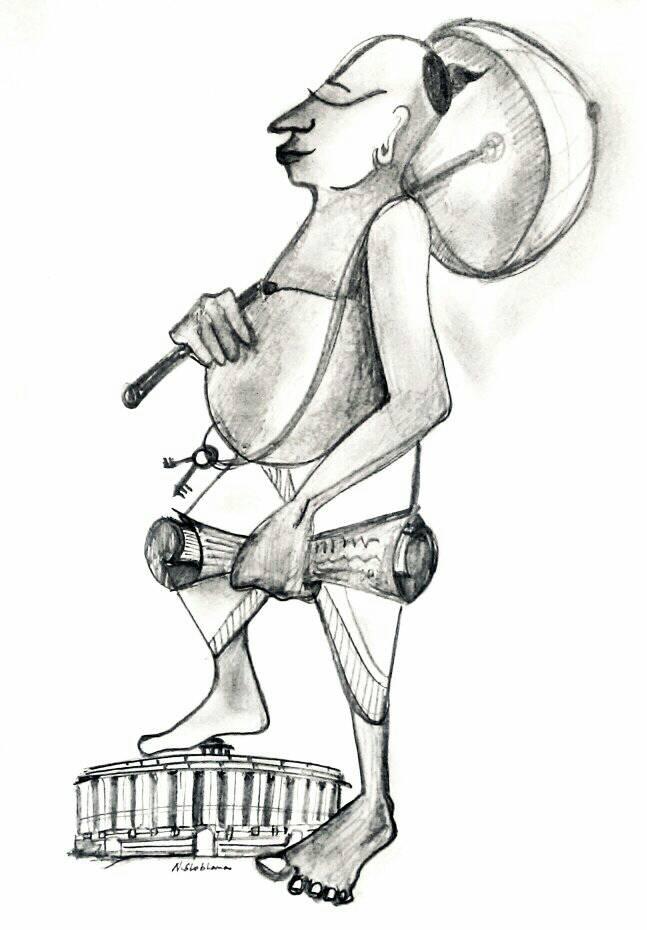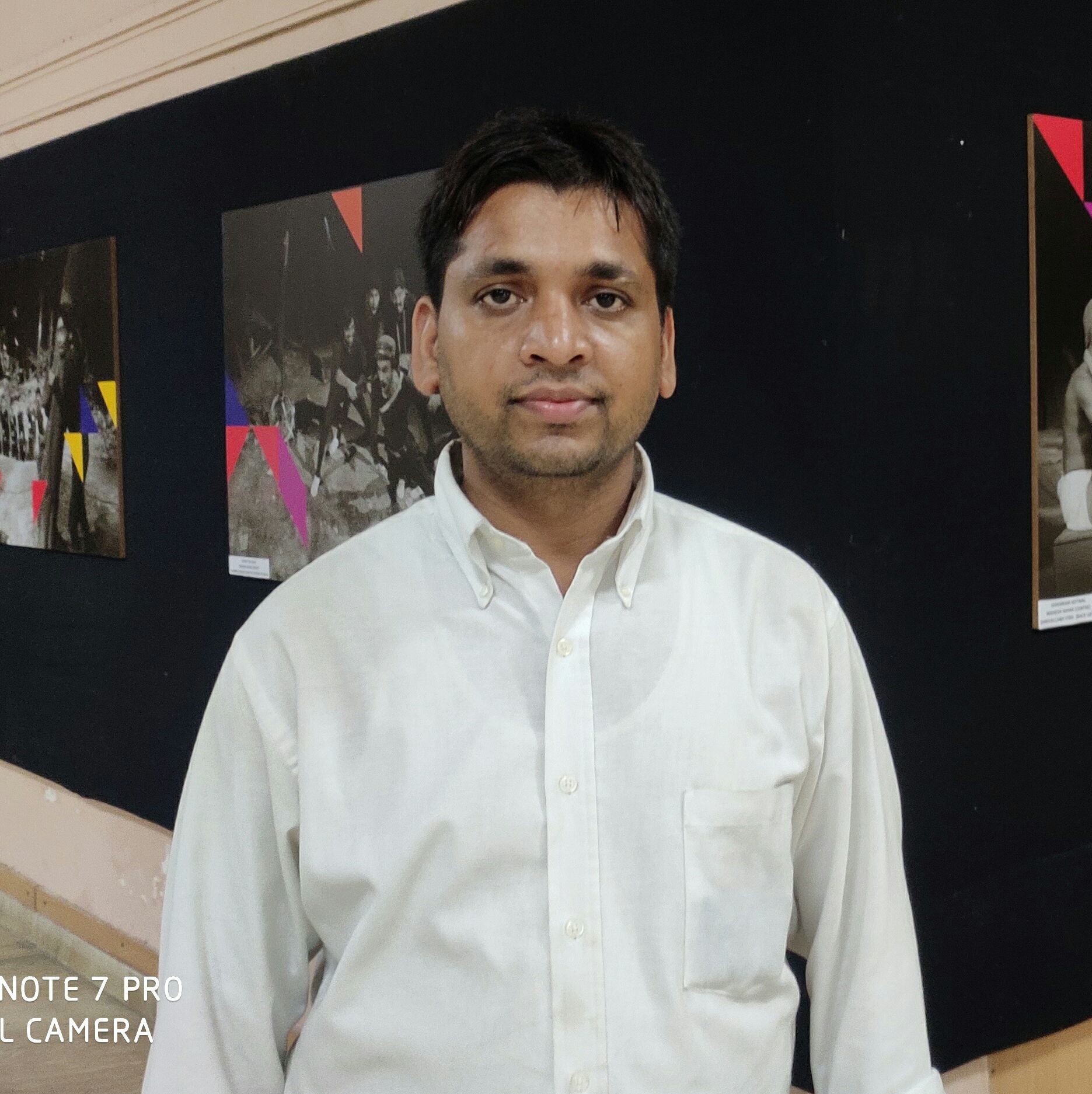Bobby Kunhu – Pragya Akhilesh


“I’d like to be remembered as a person who wanted to be free and also wanted other people to be free”– Rosa Parks
It is estimated, based on government data, that at least one person dies cleaning a septic tank or sewers every five days in India. This is apart from the indirect deaths due to diseases like TB and alcoholism contracted from the state of sanitation work in India. And this data is conservative at best.
The problem of sanitation labour in South Asia is rooted squarely in its social organization – that is the caste system. Across South Asia, people engaged in sanitation work belong to the lowest castes in the region and in some urban spaces lower caste Muslims. In this situation, India alone boasts around 5 million sanitation workers whose longevity (thanks to work related physical and mental hazards) is much lesser than the average Indian’s. To top it, the caste psyche refuses to see sanitation workers beyond itself. The result being that, when the rights of sanitation work is discussed, it is usually discussed only within the framework of either the (Prohibition of Employment) as Manual Scavengers and their (Rehabilitation Act, 2013) or the scheduled castes and scheduled tribes (Prevention of Atrocities) Act, 1989. And as a consequence, sanitation workers are excluded from the discourse around regular labour and fundamental human rights. For instance, except in the government sector, which is a miniscule percentage of sanitation work, sanitation workers don’t even get paid minimum wages.
In other words, the 5 million plus sanitation workers and their families come from socio-historically disenfranchised castes and communities who have been denied their own cultures systematically. The level of disenfranchisement can be evidenced from the lack of efforts to qualitatively and quantitatively document the problem of sanitation labour, while there is much traction given to schemes like Swachch Bharat Abhiayan and Safai Mitra. Any solution to the sanitation labour problem has to be rooted in collective socio-political enfranchisement of these castes and communities – ensuring social, economic and political mobility, so that their concerns become visible in the mainstream, so that each time a sanitation worker dies in a sewer or a septic tank or she dies prematurely contracting disease from the hazards of her disease – the society as a whole learns to be shocked – sees them as human beings.

Meanwhile in Kerala, the COVID crisis has deeply impacted sanitation workers in the state despite interventions by the state. At present Kerala has more than 31,000 sanitation workers employed in manual scavenging. No compensation has been paid in recorded death cases since 1993 with different surveys only reflecting a total of 800 manual scavengers very far away from the actual reality on ground. As of April 2021 total death toll of sanitation workers is more than 6536, 80 percent of which is uncounted since some of the categories of these sanitation workers are beyond the ambit of (PEMSR Act 2013). When PEMSR Act 2013 was hardly implemented for the recognised categories in the state in the last years the other categories are left without any survey. The 600 identified manual scavengers in the national survey undertaken during 2018-19 have neither been rehabilitated nor given any alternative micro credit facilities. In rural Kerala which has already been declared ‘open defecation free’ as early as 2016, sanitation workers manually scavenge thousands of dry latrines and drains near the water bodies with their bare hands and brooms every single day. After the second wave sanitation workers have found newer dry latrines in the outskirts of Kollam, Ernakulam, Alappuza and Palakkad which had become Covid hotbeds as early as March this year. The state did not develop any program to demolish them.
The Suchitwa Mission has failed the manual scavengers in Kerala since there is a sharp contrast in the actual situation of sanitation workers who on one side are being awarded as sanitation warriors by municipalities of towns like Vadakara but like the municipality of Indore, titled as the cleanest city of India, the waste management laurels have not been able to be of any help for the manual scavengers in the area.
In areas like Kapalandimukku in Kollam city more than many Chakliyans face the burden of their children being employed as manual scavengers in the absence of any alternative employment opportunity. Mehmood, a sanitation worker from this area says that even in sanitary toilets he manually scavenges human excreta to this day, he continues to do that even when he approached the government for alternative employment. He also requested the governemnet for the Bandicoot training program and usage for which he was not given the machine since he could not produce a caste certificate or show that he is a resident from the state.
The real problem is that the Kerala government keeps stating that there are no manual scavengers employed in the state. The limited identification is of mere 2 percent of the total manual scavengers within the state. In the outskirts of Kozikhode, places like Njeliyanparamba have gained prominence working to becomne manual scavenging free yet a few kilometres away, manual scavengers can be found picking up human excreta and animal carcasses.
It is in this context, more than 5000 sanitation workers from across India, Nepal and Bangladesh have agreed to bring South Asian sanitation worker and labour network to reality. Through the South Asian culmination discourse and convention of sanitation workers, by sanitation workers and for sanitation workers held in Punnayur, Thrissur, Kerala between 1st and 5th of October, 2021. The Sanitation Workers’ Charter about sanitation workers and their rights, advocacy, labour rights and laws, socio-legal and integrated economic impacts on workers and minority communities (including Dalit Rights, Gender Equality, Dignity, Education, Land Rights, Right to Shelter, Health & Rehabilitation) was released. This process is expected to contribute to a collective social, political and economic enfranchisement of sanitation workers across South Asia.
On 5th evening, at the culmination of the convention, SASLN formally released the following charter:
SASLN CHARTER
Sanitation Workers are Human Beings!
We demand, as of yesterday, the rights and dignity that are accorded to every person!
Goal 1:
a) To understand the interconnectedness of other caste based occupations and link them to the existing categorisations of sanitation work.
b) To re categorise and mobilise sanitation workers in India, Pakistan, Bangladesh and Nepal and other South Asian countries
c) To reorganise the issues faced by minority sub communities and bring it to national discourse.
Goal 2:
To form a federation of Sanitation workers with G-4, core advisory bias. The advisory also consists of sanitation workers of India, Pakistan, Bangladesh and Nepal and other South Asian countries who have solemnly resolved to protect their health, safety and dignity. In this regard they challenge their respective governments on their wages, right to work, right to pension etc. The advisory functions on the assessment of various laws and schemes connecting interrelated themes of hunger, homelessness, poverty, etc.
Goal 3:
To understand the interconnectedness of water and sanitation, sanitation infrastructure, sanitation behaviour with sanitation labour in South Asia for resource based research. SASLN, therefore, is linked to the advocacy think-tank Sanitation Worker Resource Forum, South Asia (SWORSA) which is going to be a resource portal and a yearly culmination event for researchers in the above mentioned thematic area. The main aim will be that valuable members can add their impact and policy findings with SASLN through their grassroots network of sanitation workers and labour in South Asia.
Goal 4:
(Theme of 2021-22) The central government had launched the Safai Mitra aimed to ensure that no person needs to enter a sewer or septic tank, unless absolutely unavoidable in the interest of greater public hygiene in November 2020. While deaths in the septic tanks continue there is an increasing need for the government to reassess their policies and schemes and convert the SafaiMitra into ‘SafaiKarmachariMitra’. In this regard, it is important to speak on their rights and dignity. SASLN was formed in March 2021 with the objective of helping the sanitation workers in India and connecting them to the other South Asian sanitation workers.
Goal 5:
To analyse the existing central and state level schemes, Budgetary allocation, policies and laws related to sanitation workers and Dalit/Bahujan/Minority communities (NCSK, NSKFDC, Ministry of Social Justice and empowerment schemes and database) and give recommendations on the same.
~~~
Bobby Kunhu is a lawyer, researcher and writer and Pragya Akhilesh is a trade unionist, activist and theatre director.










